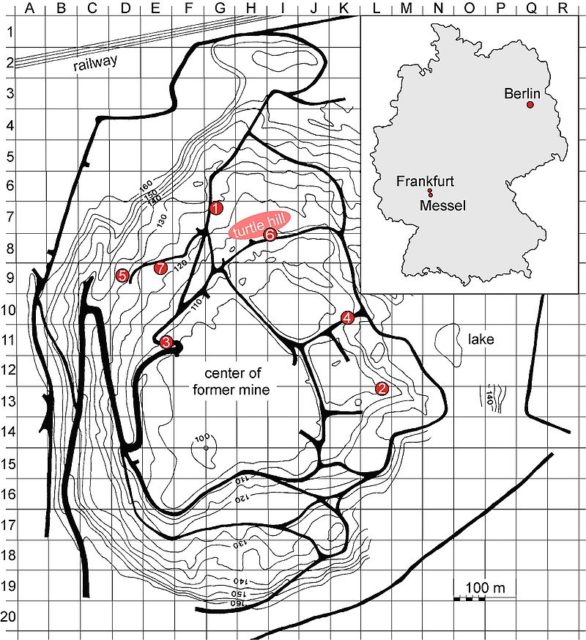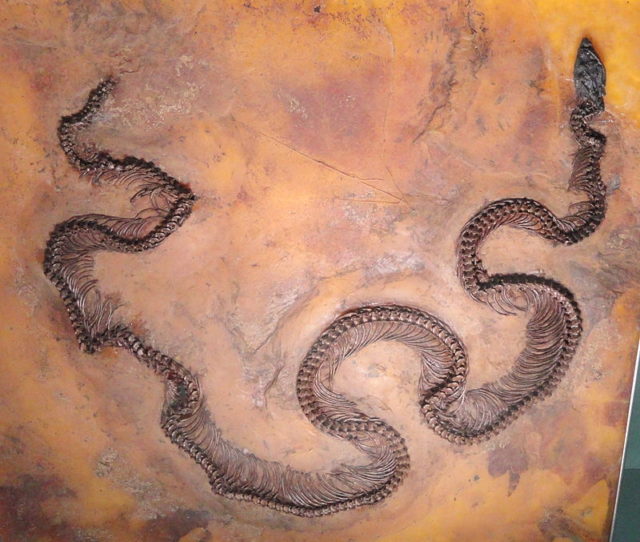A unique fossil, demonstrating an ancient food chain was discovered by researchers studying the Messel pit on a dig site near Frankfurt, and it is believed to be 48 million years old.
The specimen contains a snake that died shortly after eating a lizard that had recently eaten a beetle.

It is impressive that such a fossil exists in such a well-preserved state, and that each consumed creature is recognizable. The snake was known to be a member of the species Palaeopython fischeri, which is an extinct type of snake once found in what is now Germany. It was a tree-dwelling snake related to modern boas. Growing to a size of up to 2 meters, they could live on the ground or in shallow water near riverbanks. The individual in this fossil, however, was only 103 centimeters in length and so is thought to be a juvenile.
The lizard belongs to the species Geiseltaliellus maarius. It is an extinct lizard of the iguanian lizards that are found in Germany, Belgium, and France. The best-preserved ones are found in the Messel pit in Germany. These lizards had long legs, short arms, and a long tail. The tail was adapted to running and climbing on the ground and in trees. The long toe bones of these lizards, like those of their living cousins, suggest that this species spent most of its time in trees. The probable paleoenvironment of the Messel Pit would have been a dense forest.
Paleoecology is the science of determining ancient environments. Using the evidence found in fossils, it reconstructs the ecosystems these creatures would have lived in. Traces left behind in the fossil record, such as seeds, shells, teeth, and pollen, help scientists infer characteristics of the environment. Therefore, a fossil field like the Messel pit in Germany offers valuable clues to not just the creatures themselves, but to what the plant life would have been like too.
Scientists can tell that the lizard is inside the snake due to the way the snake’s ribs overlap those of the lizard. The lizard had the ability to shed its tail when attacked but did not do so before being eaten, as its complete remains are intact inside the snake. The beetle is not preserved enough to be meaningfully identified.

Also discovered at the same site is the last meal of grapes and leaves inside a fossilized prehistoric horse. Pollen grains found inside fossilized bird and insect remains visible in fish excrement are a testament to the excellent preservation qualities of the area.
Previous fossils of reptiles contained only plant remains due to the speed of the creature’s digestive system. The Messel Pit will likely yield more fascinating finds as digs continue.